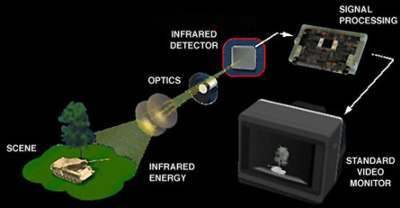
When your clock radio starts playing music first thing in the morning, or the oven automatically comes on to cook a meal, the switch has probably been operated by a digital clock.
At the heart of the switch is a quartz crystal which vibrates at a fixed frequency when connected to a source of electrical power – battery or mains. The vibrations produce regular electrical pulses, which travels through circuits in a microchip to operate the digits on the clock.
The switch also has a memory, in the form of a microprocessor, which stores the time when the radio, oven or central heating system has to be turned on. The microprocessor constantly compares the stored time with the real time as measured by the clock.
When the turning on time comes, it sets off a low-voltage electronic signal. This signal is amplified by a transistor circuit and flows through a relay, an electronic device in which a small current causes a metal contact to move, switching on the main current.
Picture Credit : Google







